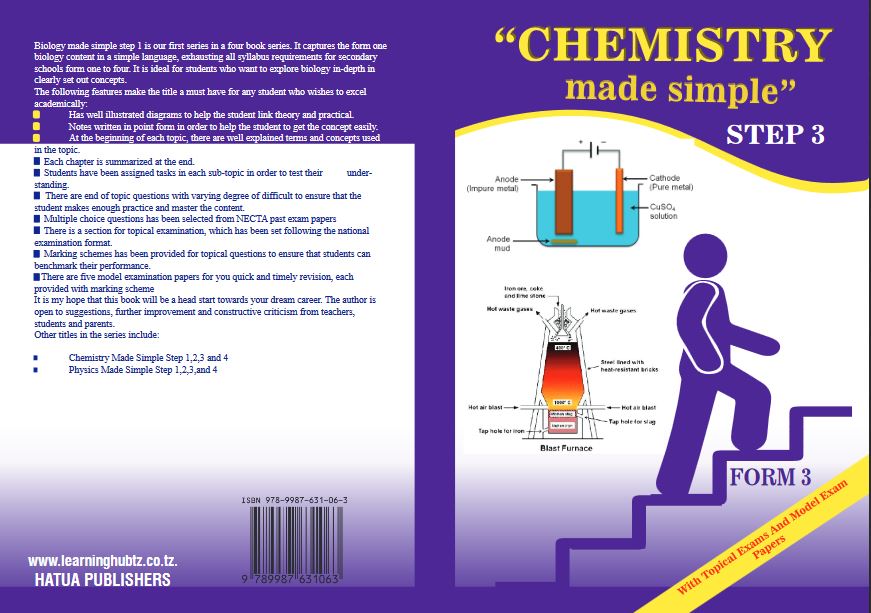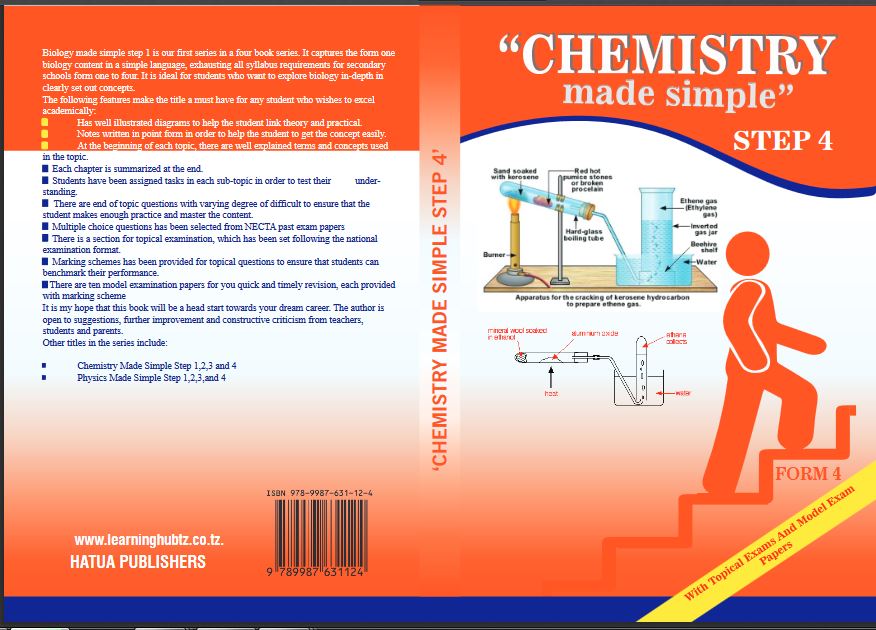THE PRESIDENT’S OFFICE
REGIONAL ADMINISTRATION AND LOCAL GOVERNMENT
FORM ONE ANNUAL EXAMINATION
GEOGRAPHY
TIME: 3 HOURS NOVEMBER 2024
INSTRUCTIONS:
1. This paper consists of section A, B and C with a total of ten (10) questions.
2. Answer all questions.
3. Section A carries fifteen (15) marks, section B carries seventy (70) marks and section
C carries fifteen (15) marks.
4. All writing must be in black or blue ink.
5. Answers must be written in the space provided.
6. Cellular phones, calculators and any unauthorized materials are not allowed in the examination room.
7. Write your Examination Number at the top right corner of every page.
SECTION A (15 MARKS)
Answer all questions in this section
1. For each of the items i-x, choose the most correct response
i. A branch of geography that deals with natural features of the earth
A. physical geography
B. economic geography
C. practical geography
D. regional geography
ii. A nearest position of the moon`s orbit from the earths
A. Apogee
B. Aphelion
C. Perigee
D. Perihelion
iii. Planet earth take a complete day to rotate 360degrees, how many hours will be used to complete 90 degrees
A. 12hrs
B. 24hrs
C. 6hrs
D. 3hr
(iv) The Ocean Floor, is not flat in natural since it consists uplands and low land features. Which
of the following features is the best for fishing activities?
A. Continental basin
B. Continental shelf
C. Oceanic Island
D. Oceanic slope
v. Matogolo prefer to visit coco beach in Dar es salaam in order to enjoy fresh air blowing From the sea. What type of wind is this?
A. Anabatic wind
B. Off-shore wind
C. Katabati wind
D. Onshore wind
(vi) John and Hamis developed a strong debate on the shape of the Earth, Hamis argued that, a
shape of the Earth is flat, while John argued that the shape of the Earth is not flat. How can
you help them?
A. The shape of the Earth is round
B. The shape of the Earth is flattened sphere
C. The shape of the Earth is flat
D. The shape of the Earth is sphere
(vii) Sometime the shape of the Sea is anomalous, it can enter the land or surround the land. All
these appearances have different names. What is the name of the part of Sea that is surrounded
by land?
A. Peninsula
B. Cape
C. Highland
D. Gulf
viii. In weather map place with the same amount of rainfall are joined by smooth line called
A. isobar
B. isotherms
C. isohyets
D. isohels
(ix) Dr. Lymo advised a Meeting at Mombasa (15°E). at noon, the people of Benin observed
the same speech at 8:00 am on the television, suggest the longitude of Benin.
A. 30°W
B. 45°W
C. 45°E
D. 60°E
(x) Problem in the Indian Ocean where the Captain called for the help from the engineer crew,
He told them, the ship is found somewhere in East? What is bearing of that direction?
A. 125°
B. 090°
C. 270°
D. 180°
ANSWERS
| i | ii | iii | iv | v | vi | vii | viii | ix | x |
|
|
|
|
|
|
|
|
|
|
|
2. Match the description of livestock keeping system in list A with their corresponding type in list B by writing the letter of the correct response bellow the corresponding item number in the table provided.
2. Match the following geographical events in List A with their corresponding dates in List B by
writing the letter of writing the letter of correspondence item in the box provided below.
| LIST A | LIST B |
| (i) Aphelion (ii) Perihelion (iii) Equinox (iv) Summer solstice in the tropic of cancer (v) Summer solstice in the tropic of Capricorn
| A. 21st March and 22nd December every year B. 21st June every year C. 22nd December D. 3rd January every year E. 21st March and 23rd September every year F. 4th July every year G. 23rd December every year |
ANSWERS
| i | ii | iii | iv | v | vi |
|
|
|
|
|
|
|
SECTION B (70 Marks)
Answer all questions in this section
3. (a) Rainfall variation is a normal phenomenon on the Earth surface, this determines the distribution of economic activities such as crop cultivation and livestock keeping. Briefly explain four factors that influence the amount of rainfall in a particular area.
b) Write four factors to be considered when planning to establish a Meteorological station
4. (a) Study carefully the Climograph for station X below and then answer the following questions

(i.) Represent temperature and rainfall distribution presented in a Climograph above in a table
(ii.) Calculate total annual rainfall for the given station
(iii.) Work out the annual mean temperature for station X
(iv.) With two reasons suggest the type of climate for station X above
5. (a) Give five importance of parallels
(b) Position of a place on a map can be located by using different methods. List down four methods of locating position on maps
6. (a) Carefully study the diagram below and then answer the questions below.

(i) What is the name of a diagram above
(ii) Name the processes indicated by letter A – E
(b) Water scarcity is still a challenge to most of developing countries like Tanzania, briefly describe four factors affecting water supply in Tanzania
7. The surface of the continents are not smooth, there are variety of landforms found on them. The
altitude and slope give rise to different relief features.
(a) With examples, identify five relief features found on the surface of Tanzania.
(i) ______________________________________________________________________
(ii) _____________________________________________________________________
(iii) _____________________________________________________________________
(iv) ______________________________________________________________________
(v) ______________________________________________________________________
(b) What is the name given to the part of the earth’s surface that rise abruptly to a greater height
above 300 meter from the surroundings level?
________________________________________________________________________
(c) Using the landforms named in part (b) above, determine its types and each type provide one
example
(i) ______________________________________________________________________
(ii) _____________________________________________________________________
(iii) _____________________________________________________________________
(iv) ______________________________________________________________________
8. Carefully study the map of MALULUMO VILLAGE given below then answer the questions below.

a) With one reason name the type of map shown above
b) If the length of the road in a map from Malulumo to Iganga is 12.5cm, calculate its actual ground distance.
c) By using the knowledge you have acquired in map work, explain how would you convert the map scale into statement scale.
d) Write down two natural and manmade features found on a map.
Natural features.
(i.) ……………………………………………………………………….……….
(ii.) ……………………………………………………………………………….
Manmade features.
(i.) ……………………………………………………………………………….
(ii.) ……………………………………………………………………………….
9. (a)A mountain is a part of the earth’s Surface that rises abruptly to a greater height usually above 300 metres from the surrounding level. By giving two examples from each, describe the four (4) major types of such mentioned physical feature.
(b) Explain three applications of great circle
SECTION C (15 Marks)
10. The explain the role of solar energy in emancipation of women and children
LEARNINGHUBTZ.CO.TZFORM ONE GEOGRAPHY MODAL SERIES 25
PRESIDENT OFFICE REGIONAL ADMNISTRATION
AND LOCAL GOVERNMENT
SECONDARY EXAMINATION SERIES
COMPETENCE BASED ASSEMENT
GEOGRAPHY FORM ONE
ANNUAL EXAMINATION
– 2023
013
Time: 2:30 Hours
Instructions
- This paper consists of sections A, B and C with a total of ten (10) questions.
- Answer all questions.
- Section A and C carry fifteen (15) marks each and section B caries seventy (70) marks
- All writing must be in blue or black ink
- All writing must be written in the space provided.
- Cellular phones, calculators and any unauthorized materials are not allowed in the assessment room.
SECTION A (15 MARKS)
- For each of items (i) – (x) choose the correct answer from alternative given and write it against item given.
- What type of rainfall occurs when warm moist wind from the Indian Ocean comes into contact with the cold air mass from land mass?
- Orographic rainfall
- Frontal rainfall
- Convectional rainfall
- Cyclonic rainfall
- John was told by his teacher that the earth makes one complete rotation every twenty four-hour. From which direction does it rotate?
- West to East
- South to North
- North to South
- East to west
- Anna and Asha were required to calculate of a road on a map in Kilometers provided that; the map scale was 1:50,000 and the distance measured on the map was 10cm. Which among the following was the actual distance presented by them?
- 10km
- 5km
- 15km
- 20km
- If the temperature for Dar-es-Salaam at the sea level is 30°C, what is the temperature for Moshi at 300M above the sea level?
- 31.2°C
- 28.2°C
- 30.2°C
- 32.2°C
- Which of the following is an example of Residual mountain in Tanzania
- Mount Sekenke
- Mount Kilimanjaro
- Mount Ruwenzori
- Mount Meru
- A branch of geography that enable leaner to acquire practical skills that enhance their ability for interpreting both skills, this is called
- Physical geography
- Practical geography
- Human and economic geography
- Skills geography
- A business woman from Siberia who is found in Eastern part went to Alaska which is found in Western part, for her business trip. What will happen to her in concept of gain and losing the day?
- Gain a day
- Loses a day
- Gain and loses a day of the some time
- None of the above
- The five essential of the map are the one which make the map complete the essential which is used in measuring the distance in the map is known as
- Scale
- Key
- Compass
- Title
- The graph which shows both temperature and rainfall characteristics is called.
- Bar graph
- Climatorgraph
- Isograph
- Isobar
- A collection of salt tolerant tree and scrubs grow on estuaries and deltas of tropical coastline is
- Tropical Mansoon forest
- Mangrove forest
- Equatorial forest
- Deciduous forest
- Match the type of Natural forest in LIST A with the corresponding description in LIST B by writing the letter of the correct response in the box below.
| LIST A | LIST B |
|
|
SECTION B: (70 Marks)
Answer all questions
- (a)Amani was wondering to see the rain along the eastern slope of Mt. Kilimanjaro leaving the west with rain shadow effect
- Which type of rainfall on eastern side
- With aid of diagram show type of rainfall experienced by Amani.
(b)Describe factors that determine climate of a place
- (a) On any given map you can locate position of different things by using different methods. Identify the four methods which can be used to locate positions
(b)Convert 1:50,000 into statement scale
(c)Draw signs and symbols of the following
- Mountain
- Swamp
- School
- Railway
- Study carefully the data recorded from major weather station from 4th January 2023 to 11st January 2023 and answer question that follow
| Day | Mon day | Tues day | Wednesday | Thursday | Friday | Saturday | Sunday |
| Temp C° | 19 | 20 | 20 | 21 | 19 | 21 | 20 |
| Rain (mm) | 35 | 47 | 40 | 43 | 27 | 41 | 39 |
- Calculate weekly average temp in centigrade
- Complete the weekly rainfall in millimeters
- Find temperature range with the week
- Which is the wettest day in a week? Why?
- What were the coldest days in a week? Why?
- Juma and his friend were Watching news on Television on weather forecasting, that tomorrow Morogoro region will experience high temperature
- As a form one student help Juma explain why the forecast did happen as expected
- Short list four elements of weather
- During holiday, Pendo travelled from Dar-es-Salaam to Mbeya but when she reached at Iringa she experienced different climate which differ from that of Dar-es-Salaam and Morogoro.
- Help Pendo identify five causes of climate variations
- Give five differences between climate and Weather
- The earth is not flat but round. Justify this statement using six points
- (a)Explain what will happen when
- The earth process between moon and the sun
- The moon passes between sun and Earth support using diagram.
(b)Identify four resultant effects of earth rotation
SECTION C (15 Marks)
- (a) How does Tanzania benefit from solar Energy
(b)In which ways does society benefit from weather forecasting?
LEARNINGHUBTZ.CO.TZFORM ONE GEOGRAPHY MODAL SERIES 18
LEARNING HUB TANZANIA
GEOGRAPHY EXAMINATION
– FORM ONE
TIME 2:30HRS
Instructions
Attempt all questions
SECTION A (30 marks)
- For each of the following items choose the most correct answer from the given alternatives and write its letter in the space provided:
(i) Wind vane is an instrument used for;
(a) Recording wind velocity
(b) Recording temperature
(c) Measuring the direction of wind
(d) Measuring air pressure.
(ii) The solar eclipse occurs when:
(a) The moon comes between the sun and the Earth
(b) The sun comes between the moon and the Earth.
(c) The earth comes between the sun and he moon.
(d) All of the above.
(iii) If it is 3:00pm at Mwanza 330E in Tanzania, what will be the time at Tehran 500E in Iran.
(a) 10:00 am
(b) 4:08 am
(c) 4:32 pm
(d) 10:00 pm.
(iv) A weather instrument which is not kept in the Stevenson screen is;
(a) Wet bulb thermometer
(b) Dry bulb thermometer
(c) Barometer
(d) Maximum thermometer.
(v) Dar es Salaam at sea level has temperature reaching 300C. Determine the temperature of Arusha situate at 1500 metres above the sea level.
(a) 210C
(b) 390C
(c) 90C
(d) 230C
(vi) Wind blows from;
(a) Low altitude to high altitude
(b) Low pressure to high pressure zone
(c) Sea to land during night
(d) High pressure to low pressure zone.
(vii) Identify the incorrect association in the following pairs;
(a) Isobars and sunshine
(b) Isotherms and temperature
(c) Isohyets and rainfall
(d) Isokinetic and wind.
(viii) The second largest continent in the world is;
(a) Europe
(b) Asia
(c) Africa
(d) North America.
(ix) Angular distance measured in degree East and West of the prime meridian.
(a) Latitude
(b) Longitude
(c) Great circle
(d) Equator.
(x) The atmosphere is said to be humid only when;
(a) It contains water vapour
(b) It is unsaturated with water vapour
(c) It is saturated with water vapour
(d) It does not contain water vapour.
Answers
| i | ii | iii | iv | v | vi | vii | viii | ix | x |
|
|
|
|
|
|
|
|
|
|
|
- Match the items in column A with those in column B by writing the letter of the correct answer in the space provided.
| COLUMN A | COLUMN B |
| (i) Nearest position of the Earth from the sun. (ii) Rainfall due to the meeting of two different air masses. (iii) Blows from land to the sea during night. (iv) Periodic rise and fall in the level of ocean water. (v) Largest Lake in the World. (vi) A climatic region that receives its rainfall in winter. (vii) The only continent that is crossed by both tropic of Cancer and tropic of Capricorn. (viii) Expression of humidity. (ix) Interval division in longitudes across the earth. (x) Planetary winds which blow from subtropical to temperate regions. |
|
Answers
| COLUMN A | i | ii | iii | iv | v | vi | vii | viii | ix | x |
| COLUMN B |
|
|
|
|
|
|
|
|
|
|
- The following statements are either correct or incorrect. Write TRUE if the statement is correct and FALSE if the statement is incorrect in the space provided.
(i) Warm ocean currents are mainly found in the Western side of the continents. ___________________
(ii) Pressure increases with the decrease in temperature. _________________
(iii) When there is a big difference in readings between the wet bulb and dry bulb thermometers it means temperature is high. ____________
(iv) Daily range temperature is the difference between the highest and the lowest mean temperature. ______________
(v) Europe is the most populated continent in the world. _____________
(vi) Summer solstice occurs on 21st March and 23rd September. _________
(vii) Leeward side of the mountain receives heavy rainfall. ____________
(viii) Equatorial climate receives rainfall throughout the year with no definite dry season. ______________
(ix) The unit of atmospheric pressure is milibars or fahrenheit. ___________
(x) High clouds include Altocumulus and cirrocumulus. ______________
SECTION B (70 Marks)
(Answer the following questions accordingly)
- (a) There are three types of winds, namely:
(i) ______________________________________
(ii) ______________________________________
(iii) ______________________________________
(b) Mention any 5 climatic regions that you know.
(i) _____________________________________
(ii) _____________________________________
(iii) _____________________________________
(iv) _____________________________________
(v) _____________________________________
(c) Which are the two types of clouds that bring rainfall?
(i) ______________________________________
(ii) ______________________________________
- (a) Outline the seven elements of weather.
(i) ______________________________________
(ii) ______________________________________
(iii) ______________________________________
(iv) ______________________________________
(v) ______________________________________
(vi) ______________________________________
(vii) ______________________________________
(b) Give three types of rainfall.
(i) ______________________________________
(ii) ______________________________________
(iii) ______________________________________
- (a) Name the four effects of:-
(1) Rotation.
(i) ______________________________________
(ii) ______________________________________
(iii) ______________________________________
(iv) ______________________________________
(2) Revolution.
(i) ______________________________________
(ii) ______________________________________
(iii) ______________________________________
(iv) ______________________________________
(b) What are the two main elements that form the sun?
(i) _________________________________________
(ii) _________________________________________
- Mention:-
(a) Any five (5) forms of precipitation.
(i) _________________________________________
(ii) _________________________________________
(iii) _________________________________________
(iv) _________________________________________
(v) _________________________________________
(b) The two types of barometer.
(i) ________________________________________
(ii) ________________________________________
(c) The three types of thermometers.
(i) ________________________________________
(ii) ________________________________________
(iii) ________________________________________
- Differentiate between:-
(a) Parallel and meridians.
(b) Weather and climate.
(c) Aphelion and Perihelion.
(d) Land breeze and Sea breeze.
(e) Isonephs and Isohels.
- (a) Define “Stevenson screen”.
(b) Give two reasons for the establishment of Stevenson screen.
(c) Why is the Stevenson screen;
(i) Painted white?
(ii) Made up of wood?
(iii) Its legs are metallic?
- Draw a well labeled diagram of interplanetary winds (prevailing/permanent winds).
1
LEARNINGHUBTZ.CO.TZFORM ONE GEOGRAPHY MODAL SERIES 7
 For Call,Sms&WhatsApp: 255769929722 / 255754805256
For Call,Sms&WhatsApp: 255769929722 / 255754805256
 For Call,Sms&WhatsApp: 255769929722 / 255754805256
For Call,Sms&WhatsApp: 255769929722 / 255754805256






